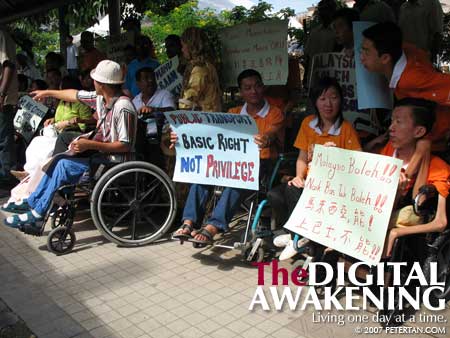Looking At A Gift Horse In The Mouth
Would you give someone a pair of shoes that are two sizes to big for her feet? Those ill fitting shoes could cause a host of problems from calluses, corns and blisters to more severe problems of the knees and ankles. Most of us would have the good sense to ensure that those shoes that we are giving are of the right size and for the purpose it was intended.
Likewise, there are wheelchairs and there are wheelchairs. Every now and then, we read in the newspapers about major corporations donating wheelchairs to those in need of one. The recipients are mostly people who are living with permanent mobility impairments. The usual scenarios are that these benefactors give away as many wheelchairs as their budget allowed in order to portray copious amounts of generosity being passed around. Unfortunately, most times, those wheelchairs are barely suitable for the recipients’ use.
Humans come in all shapes and sizes. Like shoes, a wheelchair must be of the correct size to serve the user well. An ill fitting wheelchair that is either too big or too small will cause postural problems and pressures sores, among others. Pressure sores on the buttocks and ball of the feet are expensive to manage and take a long time to heal. Postural problems, if left unattended, will result in problems such as curvature of the spine and lumbar pain.
A good fitting wheelchair is one where the user fits snugly into it much like sitting in a bucket seat. The width and length of the wheelchair seat and backrest are customised to the user’s body to ensure that pressure points are evenly distributed and a good posture is maintained. There are many other aspects to look into to fine tune the wheelchair to make it as functional as possible to suit the lifestyle of the user.
Customised wheelchairs do not come cheap and are still luxury items here. Comparatively, a basic manual wheelchair costs RM300 while a customised wheelchair costs RM6,000 upwards. That does not include a good wheelchair cushion that may add another RM1,000 or so to the cost. Given a choice, what would most well-meaning donors do? Help twenty people or just one? The solution may be obvious but the consequences of a misguided decision could be far-reaching and unpleasant.
Giving away twenty ill fitting wheelchairs could inadvertently be damning those twenty recipients to a potentially agonising journey of pressure sores and postural problems that is going to cost many times more to treat than the price of all twenty wheelchairs combined. How best can this dilemma be worked out? Frankly, I do not have all the answers for this matter.
On one hand I would like to see as many people as possible getting the assistance that they need but on the other hand I worry about the outcome of such generosity. My take is that in the long run, it would be cheaper and more logical to provide one suitable but expensive wheelchair to one person rather than treating twenty people for problems arising from using ill fitting wheelchairs. What about the other nineteen who may be in genuine need of wheelchairs too? I was made aware that some countries take care of such needs by allocating funds for customised wheelchairs for those who require it. Are we ready for such a system in Malaysia?



